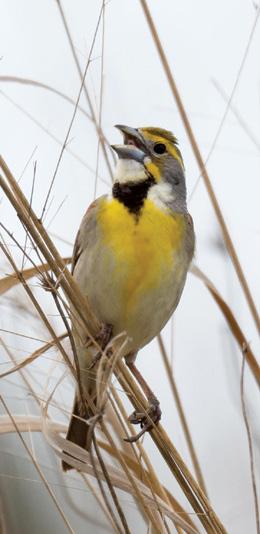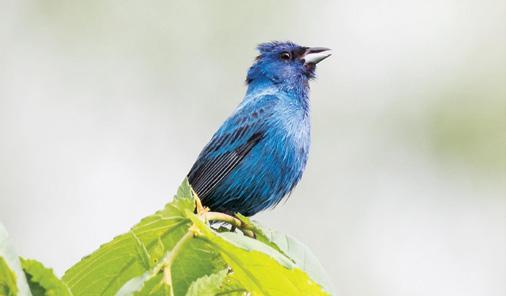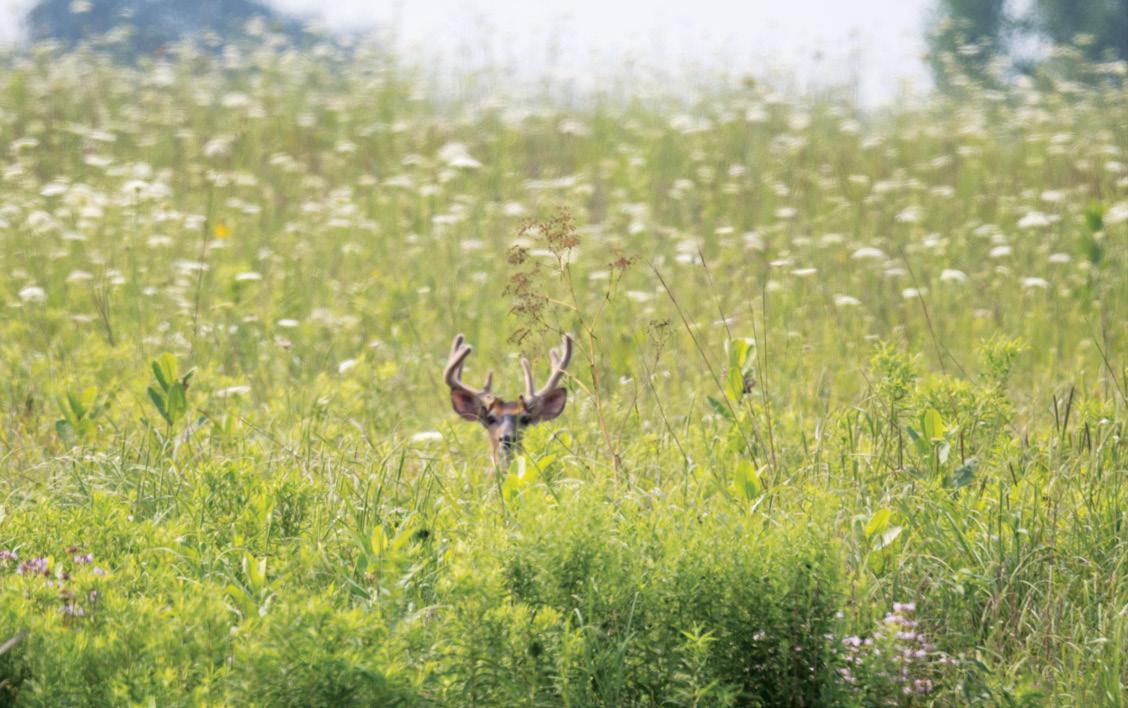
5 minute read
Department of Natural Resources
The Department of Natural Resources (DNR) continued to protect environmental quality and the natural resources on tribal properties during 2021. DNR programming this year ranged from environmental planning and water quality testing to trail maintenance, forestry, prescribed burning, invasive species management, and wildlife surveys. During 2021, the DNR applied for and received treatment in a similar manner as a state (TAS) status for EPA’s Clean Water Act (CWA) 319 program on tribal trust lands in Michigan and Indiana, as well as extending TAS authority for the Band’s CWA 106 program to tribal trust properties in Indiana. The application process began in 2016 and required the DNR to create an Assessment Report on the status of water quality in tribal water bodies, a five-year program Management Plan, and a TAS package. Now that the program has been approved, the DNR will receive annual funding to create a program to address nonpoint source (NPS) pollution that is impacting tribal water bodies in Michigan and Indiana. Future efforts will include installing best management practices to reduce stormwater runoff on developed tribal properties and building partnerships with organizations that are working on NPS pollution off tribal lands. The DNR continued to monitor water quality in tribal water bodies and this year also sampled fish in watersheds with tribal water bodies in them to test for mercury and PCBs. Based on EPA and State limits, in parts per million mercury content, the number of meals that are recommended per month depends on the size of the fish, species, and, in some instances, the location where the fish was captured (Figure on page 62). PCBs results also trend towards being higher in larger fish, especially in some of the salmonid and esocid species. The results presented are preliminary and future work is planned to obtain a more robust data set. Although these recommended meal restrictions are in place, mercury and PCBs concentrations have been slowly lowering over the past couple of decades and should be reflected in fish tissues as time continues. As a rule of thumb, the DNR suggests catch and release of large game fish to reduce exposure to high levels of mercury and PCBs as well as to enhance reproductive capacity for future generations.
kowabdanawa odë kė
THEY WATCH OVER THIS LAND


Natural resources management took many forms this year with much of the work completed on tribal properties being driven by the grants that are within the DNR. Non-native species, including, but not limited to, tree of heaven, reed canary grass, purple loosestrife, and phragmites were targeted for reduction on 49 acres of tribal properties. Reducing non-native species allows for native species to be able to flourish in the areas where non-natives have been removed. Further, the DNR planted native seed mixes on 19 acres of tribal properties to enhance native species and create more food sources for pollinators and other wildlife. Aquatic invasive species removal stations were placed at Rodgers Lake and Sassafras Lake during 2021, while another unit will be placed at the Peavine Street boat launch in 2022. These units help boaters by providing tools for them to remove any plant materials on their watercraft, thereby reducing the possibility of spreading non-native aquatic species between water bodies. DNR also continued the protection of ash trees on tribal properties through the use of biological controls and treatment of living black ash trees. The DNR utilized a tribal wildlife grant to monitor turtles throughout 2021, using radiotelemetry and turtle dogs to determine what habitats were preferentially used by eastern box turtles. Also, with this grant, the DNR issued 1,233 plush turtles to tribal citizens (Figure on page 61). These plush turtles are still available, as the DNR has enough for all tribal citizens to receive a plush turtle. If you are a tribal citizen and haven’t requested a plush turtle yet, give the DNR office a call at (269) 782-9602 to find out more details.








The DNR also resumed monitoring mnomen through two different grants within the department during 2021. Monitoring occurred along creeks with known mnomen beds and in collaboration with federal agencies. Although mnomen grew well in some locations during 2021, there was a lot of ghost rice and there were also some mnomen beds that were negatively impacted by heavy rain events that occurred throughout the spring and early summer. The DNR will continue to monitor mnomen to better determine the health of the mnomen beds over multiple years. The DNR continued issuing hunting, fishing, and gathering licenses this year through modified formats, where citizens were able to request license paperwork, either via postal mail, email or in-person appointment. Following completed paperwork, citizens were able to pick up licenses or the DNR also offered to mail them to citizens, a service which the DNR is continuing into 2022. A total of 222 licenses were issued in 2021 allowing citizens to access tribal properties for cultural and traditional purposes. The DNR encourages anyone to send in suggestions via the departmental email, PokagonDNR@PokagonBand-nsn.gov, or give us a call.

Distribution of Plush Turtles in 2021 - Total 1,233
AGE 0 – 5
AGE 6 – 10
AGE 11 – 18
AGE 19 – 30
AGE 31 – 5 5
AGE 56+ 52
62
54 271 403
391
0.60
0.50
1 meal per month
2 meals per month
4 meals per month 8 meals per month 12 meals per month
16 meals per month


0.40
0.30
0.20
0.10
0.00
0 5
Mercury Results in Fish Sampled - 2021
10 15
20 FISH LENGTH MEASURED IN INCHES
25 30 35
Fish Species
BLUEGILL BROWN BULLHEAD BROWN TROUT COHO SALMON COMMON CARP COMMON SHINER CRAPPIE CREEK CHUB GIZZARD SHAD GOLDEN REDHORSE GREEN SUNFISH HYBRID BLUEGILL KING SALMON LAKE CHUB SUCKER LARGEMOUTH BASS NORTHERN PIKE PUMPKINSEED ROCK BASS STEELHEAD SPOTTED SUCKER WHITE SUCKER YELLOW PERCH


The figure on page 62 indicates results from fish sampled within the watersheds where tribal water bodies are located.







